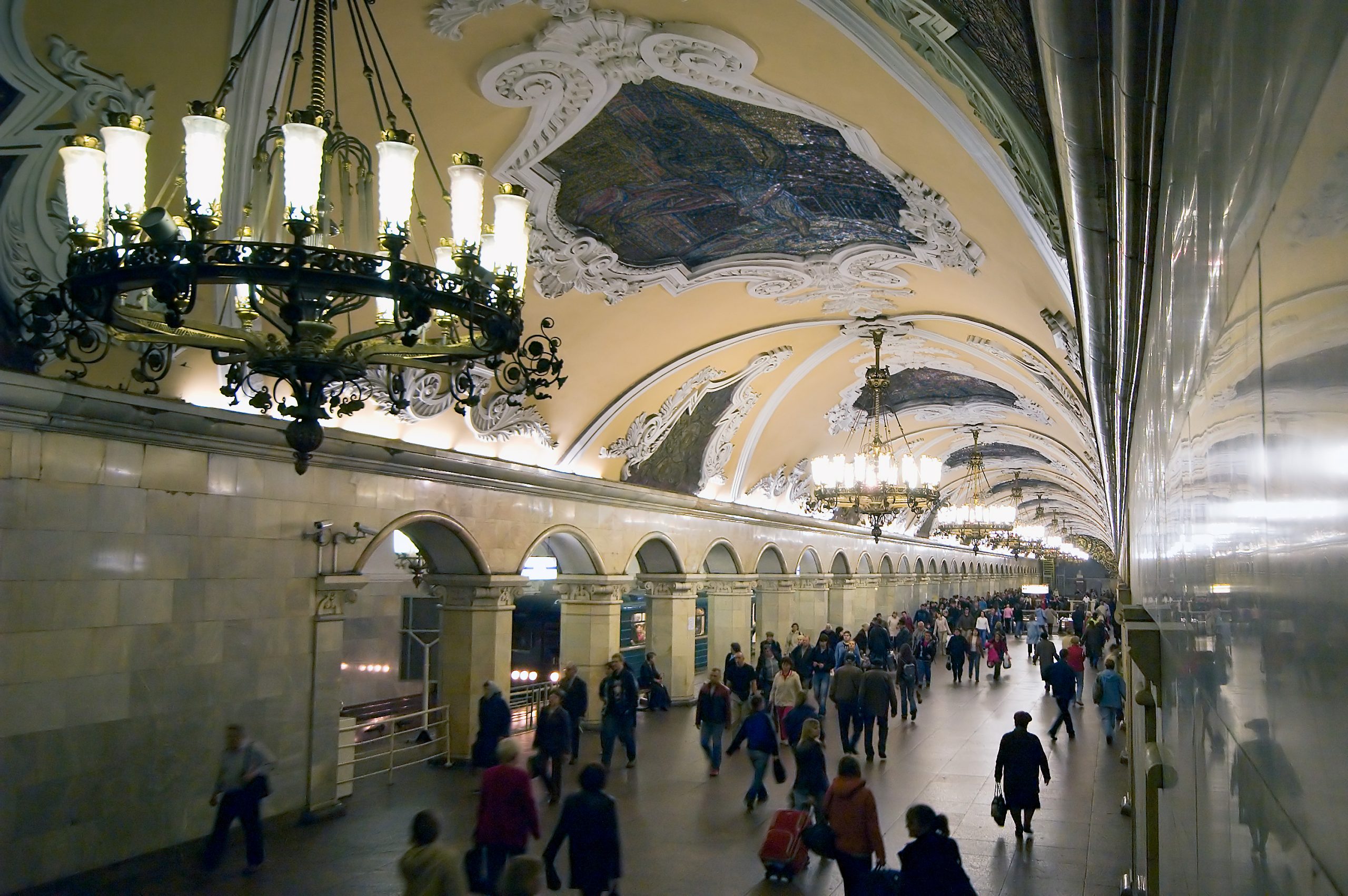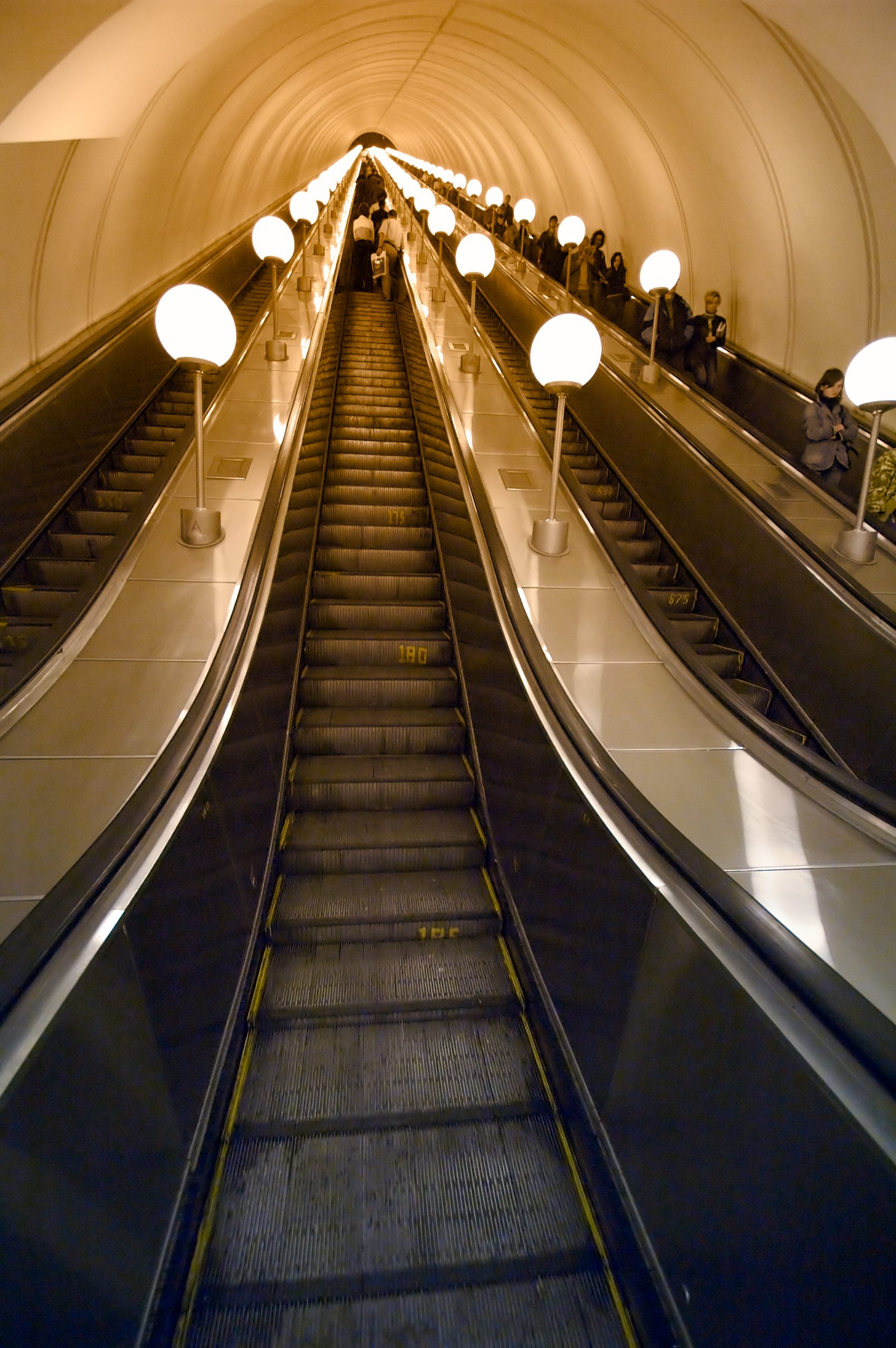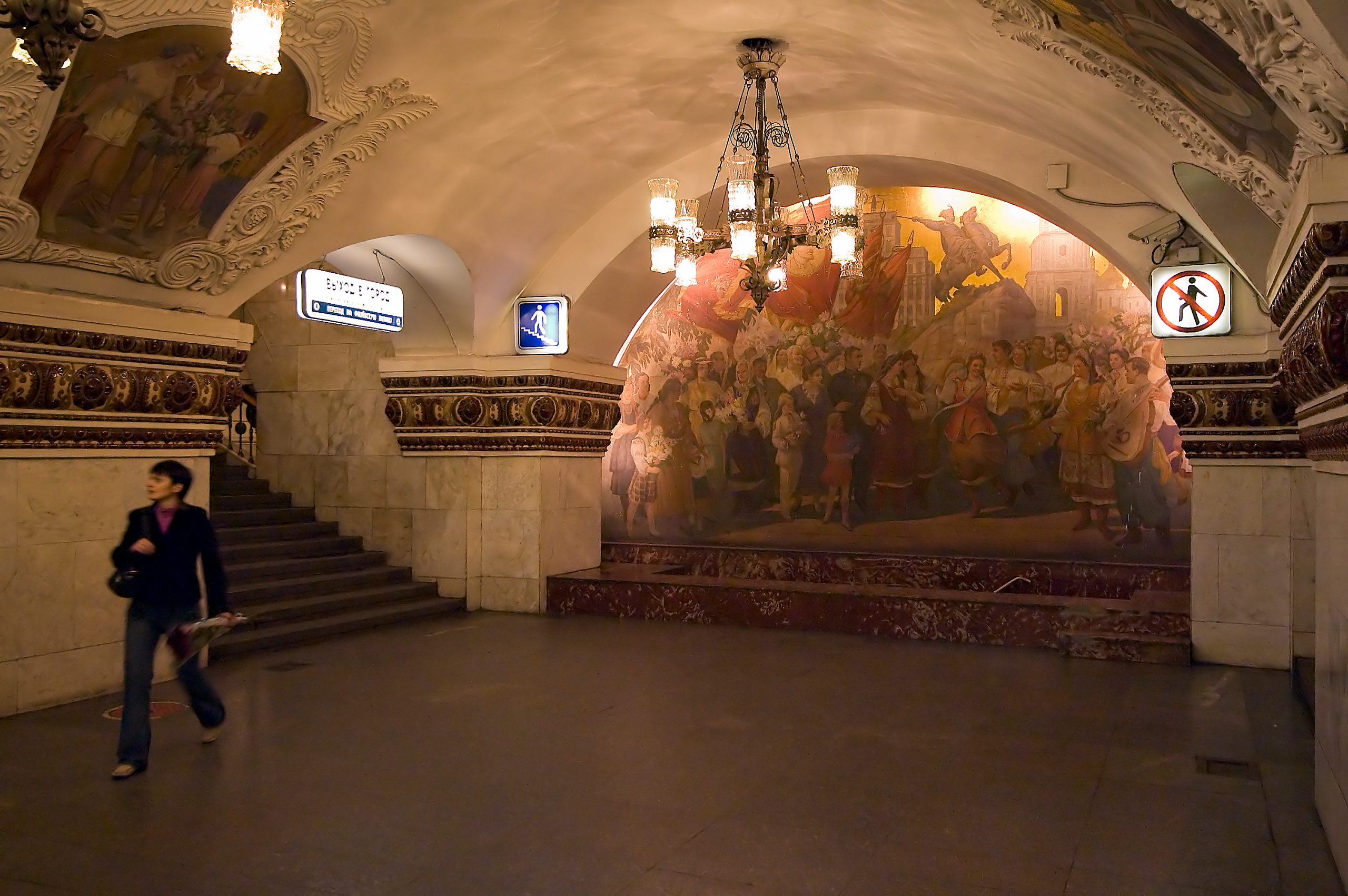Exploring Moscow Underground
Photography Strictly Forbidden
Leafing through my guide book one more time while sitting on board the Airbus A321 to Moscow, I spotted a sentence written in a fine print right below the title of Moscow’s underground public system – METRO. “Photography strictly forbidden on the metro for reasons of security” Hmmm. At that moment, as if my rebellious childhood mind arose again, I knew exactly what my photographic project would be. Yes, I was going to try to photograph 10 best stations of Moscow’s metro. 🙂

As Moscow itself, the Metro is huge and surreal. It was inaugurated in 1935 and has since grown into a huge network of 12 lines with 172 stations, of which 71 are deep-level and 87 are shallow. In addition, there are ten ground-level stations and four above ground. Many of the stations aren’t just metro stations. They are masterpieces. The décor in many stations is unbelievable and rich. There are marble mosaics, bronze fittings, stained glass, life-sized statues, chandeliers, and other ornamental items you would rather expect to see in a church or a museum.
Being a tourist, I was using the Metro very often as it was a very convenient way of getting around the city. The trains run every 90 seconds during the day. It feels like one train leaves the station and you already hear the next one coming. Did you know that there are roughly 8 million passengers using the Moscow Metro every day? It is more than the number of passengers on London and Paris systems put together! I should also mention a pretty large wild dog population that seems to live in the underground entrails during the harsh winter months. Surprisingly, these dogs seem to be somewhat in peace and harmony with all that high paced motion around them. I found them rather tactful and mellow, staying out of the never-ending streams of daily commuters. Imagine 16 million legs passing by every day … That would probably numb me too.

After a few days of exploring different lines and stations, I thought I was ready to make my move. A dark and rainy morning bolstered the idea of staying under ground for hours. I decided to start at Komsomolskaya station which was opened in 1952 and is considered one of the most decorated and beautiful. Besides, if I were going to get caught right away, hopefully, I would have at least a few shots of this beautifully decorated station.

I felt uneasy because my NIKON D70 was really conspicuous even in the crowd. On top of that, even with ISO1600 I was getting speed readings 1/15s which was simply not enough to hold it still. I needed to prop myself and the camera by the wall which took me quite some time to get enough courage to do so. I didn’t mention the fact that there were 3 policemen in each station who kept an eye on anything unusual. Well, after a while with a few miserable shots I started to realize that I was probably taking a risk for no reasonably good outcome anyway. I was nearly ready to declare my defeat when after a few more shots the policemen started to go towards me. They were young guys, probably serving their compulsory time in the army. They spoke no English and so I had to dive for my very basic Russian. They were very polite, said something about tripod, and were about to leave. I was puzzled, shocked, scarred, and relieved at the same time. I quickly rehearsed a simple question in Russian and I asked if I was allowed to take any pictures in the metro. They said that pictures were allowed but no tripod. And then they even jokingly asked me if I were an American spy! It was such a great feeling for me to “converse” in Russian that I took my guide book out of my bag and showed them the sentence about forbidden photography in the metro. They looked at it, tried to decipher English between the three of them and told me that the ban wasn’t strictly enforced anymore. I knew from my book that the reason for the ban was the Chechen terrorist attack in February 2004, a bomb near Avtozavodskaya station which killed at least 40 and injured many. I thanked them for their time and patience with me, confirmed that I was good to snap photos and left. The project was on again.

At first I had mixed feelings. On one hand I felt robbed of the thrill of my spy game but on the other hand I was glad I could freely try to concentrate on my compositions and difficult photographic conditions. Clearly, I needed a tripod. But I was not allowed to use it and so I didn’t. I felt like I had a pact with Russian police and that was not to be broken.

It took me almost a half a day to complete my project. I should also mention that I was stopped and questioned by police four times at different stations during my shooting. It became obvious to me that not all policemen felt the same way about photographing in the metro. I was asked questions like why I was alone there and not traveling with a group, who I was shooting for, why metro stations, and all basic questions about where I was from, for how long I was going to stay in Russia, with whom and where, etc. All encounters with the police were very polite. I was only hoping that I would not have to show them the contents of my backpack because that could make my situation a little more complicated. Not only did I have my long lens there with other photographic equipment but I also had a GPS receiver with a PDA in my side pockets. I am sure that would have brought a few more questions up, saying the least.
When I finished my project, I felt like a ground hog after a long winter. It was time to go up and see the world around. And in Moscow, there is more than plenty to admire! It surely is a very impressive city to visit.
















